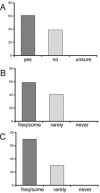Clinical Microbiology in Pharmacy Education: A Practice-based Approach
- PMID: 23653713
- PMCID: PMC3577178
- DOI: 10.1128/jmbe.v11i2.220
Clinical Microbiology in Pharmacy Education: A Practice-based Approach
Abstract
The increasing incidence of multi-drug resistant pathogenic bacteria, alongside viral and fungal human pathogens, supports the argument that skills in microbiology and infectious disease diagnosis, treatment and prevention are of growing global importance to be held among primary care clinicians. In Canada, inevitable future astronomical health care costs largely due to an aging population, have forced eyes upon pharmacists as one of (if not) the primary clinical professions to accommodate the growing need to accommodate patient access to health care while maintaining lower health care costs. As such, the role of pharmacists in health care is expanding, punctuating the need to enhance and improve Pharmacy education. Accurate assessment of the current gaps in Pharmacy education in Canada provides a unique opportunity for a new Pharmacy School at the University of Waterloo to establish a non-traditional, outcomes-based model to curricular design. We are applying this iterative curriculum assessment and design process to the establishment of a Medical Microbiology program, deemed as a prominent gap in former Pharmacy educational training programs. A PILOT STUDY WAS CARRIED OUT DISTRIBUTING A COMPREHENSIVE SURVEY TO A LOCAL GROUP OF PHARMACISTS PRACTICING IN A VARIETY OF SETTINGS INCLUDING: hospital, clinic, community, independent, industry and government, to assess perceived gaps in Pharmacy microbiology and infectious disease education. Preliminary findings of the surveys indicate that practitioners feel under-qualified in some areas of microbiology. The results are discussed with respect to a curricular redesign model and next steps in the process of curricular design are proposed.
Figures



Similar articles
-
The role of reflective practice in healthcare professions: Next steps for pharmacy education and practice.Res Social Adm Pharm. 2019 Dec;15(12):1476-1479. doi: 10.1016/j.sapharm.2019.03.011. Epub 2019 Mar 22. Res Social Adm Pharm. 2019. PMID: 30926252
-
Student and educator experiences of maternal-child simulation-based learning: a systematic review of qualitative evidence protocol.JBI Database System Rev Implement Rep. 2015 Jan;13(1):14-26. doi: 10.11124/jbisrir-2015-1694. JBI Database System Rev Implement Rep. 2015. PMID: 26447004
-
Pharmacists' experiences and perceptions about simulation use for learning and development of clinical skills in Kuwait.Int J Clin Pharm. 2019 Dec;41(6):1451-1461. doi: 10.1007/s11096-019-00904-5. Epub 2019 Sep 28. Int J Clin Pharm. 2019. PMID: 31564042
-
The changing roles of pharmacists in community pharmacies: perception of reality in India.Pharm World Sci. 2009 Dec;31(6):612-8. doi: 10.1007/s11096-009-9307-y. Epub 2009 Jun 25. Pharm World Sci. 2009. PMID: 19554470 Review.
-
Decolonizing and Indigenizing pharmacy education in Canada.Curr Pharm Teach Learn. 2020 Feb;12(2):237-243. doi: 10.1016/j.cptl.2019.11.018. Epub 2019 Nov 20. Curr Pharm Teach Learn. 2020. PMID: 32147167 Review.
References
-
- Beach WJ, Cooper JW, Franciso GE, Langford RA. An integrated infectious disease course for an entry-level Doctor of Pharmacy curriculum. Am J Pharm Educ. 1998;62:296–301.
-
- Centers for Disease Control and Prevention Get smart: know when antibiotics work. Available from: http://www.cdc.gov/getsmart/antibiotic-use/anitbiotic-resistance-faqs.html.
-
- Harman JR. Handbook of pharmacy health education. 2nd ed. The Pharmaceutical Press; London, UK: 2001.
-
- Ho SSS, Kember D, Lau CB, Au Yeung MM, Leung DY, Chow MS. An outcomes-based approach to curriculum development in Pharmacy. Am J Pharm Educ. 2009;73 doi: 10.5688/aj730114. Article 14. [online] http://www.ncbi.nlm.nih.gov/pmc/articles/PMC2690866/ - DOI - PMC - PubMed
LinkOut - more resources
Full Text Sources
Research Materials
Miscellaneous
